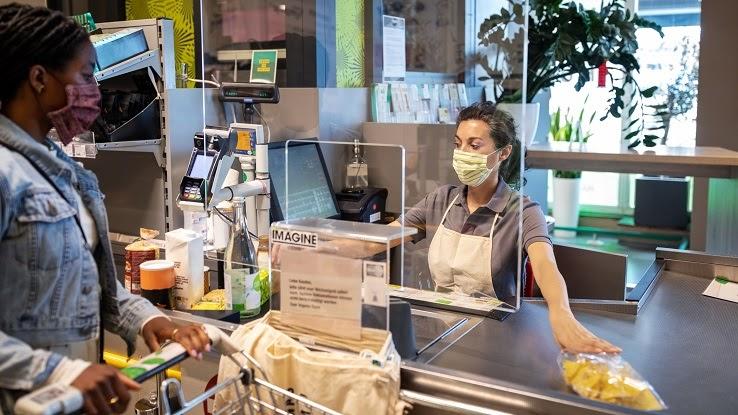PPP Loan Forgiveness Requirements for Small Businesses

The Paycheck Protection Program (PPP) provides forgivable loans that have helped millions of businesses survive the economic fallout caused by the COVID-19 pandemic. For many small businesses owners, the PPP program has provided a financial life vest. However, several highly publicized instances in which companies (or unscrupulous individuals) have been asked to return PPP funds may have many small business owners concerned. So, what exactly are the requirements for having a PPP loan forgiven?
Who Qualifies for PPP Loans?
The first round of PPP loans was awarded in 2020. As of 2021, the second round of PPP funds has been released to provide further assistance to businesses around the country. Loans from 2020 are called First Draw PPP Loans, and loans from 2021 are called Second Draw PPP Loans.

Businesses with up to 500 employees were eligible to apply for First Draw loans. For the Second Draw, however, only businesses that received funds in the first draw and now have no more than 300 employees can apply. Additionally, businesses qualifying for the Second Draw must show a 25% reduction in receipts from a quarter in 2019 compared to a quarter in 2020.
Sole proprietors, independent contractors, and self-employed individuals qualify as businesses under the terms of the PPP program. Veteran’s and Indigenous tribal organizations as well as nonprofits are also included in the definition of a business. Applications for PPP loans are similar to any other loan application. Although the funding for PPP loans comes from the Small Business Association (SBA), they are serviced through various banks, farm credit and fintech institutions, and credit unions.
Requirements for PPP Loan Forgiveness
Loan forgiveness depends on how the loan funds are used in the first six months after receipt. Paycheck protection is the core purpose of the program. Hence, a minimum of 60% of the funds has to be spent on paychecks. For a sole proprietor, paying yourself is acceptable.

The program wants to keep as many people employed as possible. In addition to using the majority of funds for payroll, business owners have to maintain the same number of full-time employees. Among full-time employees who remain, their wages cannot be decreased by more than 25%.
Under the First Draw, employers who released some employees were still eligible for loan forgiveness if they rehired the same number of full-time employees by June 30, 2020. Businesses that significantly reduced wages or the number of full-time employees may still be eligible for loan forgiveness, but these businesses no longer qualify for 100% forgiveness of the loan.
Eligible Uses
Of the 40% of loan funds that are not spent on payroll, there are requirements for PPP funds’ eligible uses. Some of these include expenses such as mortgage or rent payments, utilities, operating expenses, payments to vendors, and COVID-related PPE.

Funds received under the First Draw must be used to cover eligible expenses that existed by or before February 15, 2020. In other words, a business that decided to use PPP funds in May 2020 to get the latest phone service or software may not receive full loan forgiveness.
Second Draw loans can also be used to pay for property damage caused by civil unrest in 2020. Business debts, such as credit card payments and other loan payments, cannot be paid for using PPP funds.
How to Apply For Forgiveness
PPP loans are forgivable, but there are still steps to take to receive forgiveness. Payments are deferred on all PPP loans for six months, but interest can still accrue during that time. If the loan is forgiven, the business will never have to pay the principal or interest.

The business owner has ten months after six months of deferred payments to apply to have the loan forgiven. A business owner who fails to apply for forgiveness in time will be responsible for repaying the loan in full, including any accrued interest.
There are three different SBA forms for applying for PPP loan forgiveness: SBA Form 3508, SBA Form 3508EZ, and SBA Form 3508S. Otherwise, lenders may also have their own private forms. Regardless, the lender who provided the PPP loan will provide the business owner with the correct form upon the business owner’s request.
Documents Needed for Forgiveness Application
Plenty of documentation is also required to show that funds were used for eligible expenses and that 60% of these expenses went towards payroll. Bank statements, payroll reports, payroll tax filings, and state quarterly payroll tax reports must all be submitted. If applicable, records for any employer contributions to employee health insurance are also included in forgiveness documents. For non-payroll-related eligible expenses, receipts showing payments made with PPP funds are required. Additionally, businesses must also provide documentation to show that eligible expenses existed before February 15, 2020.

If PPP funds were used to pay a mortgage, the forgiveness application would need to include a copy of the mortgage loan amortization schedule. The forgiveness application for PPP funds used to pay rent for a business must include the lease agreement.
In principle, the forgiveness application will need to include thorough documentation of the existence and payment of any expenses that PPP funds were used to cover. This documentation must prove that the expense is either a payroll expense or an eligible expense, that it existed as of February 15, 2020, and it was paid for within the first six months after PPP funds were received.
Individual lenders have the latitude to ask for more documentation, and the SBA can conduct a review of any PPP loan. After submitting the application and documentation to a lender, business owners should be diligent in ensuring that their application has been received and processed.
PPP loans are an excellent option for business owners to keep employees working and lessen the financial impact of COVID-19. While these loans are forgivable, small business owners must be prudent about meeting deadlines, completing applications, and keeping careful records of how loan funds are spent.





